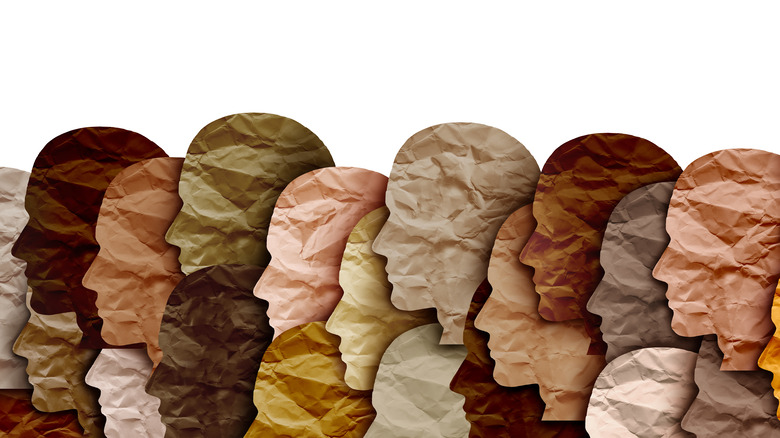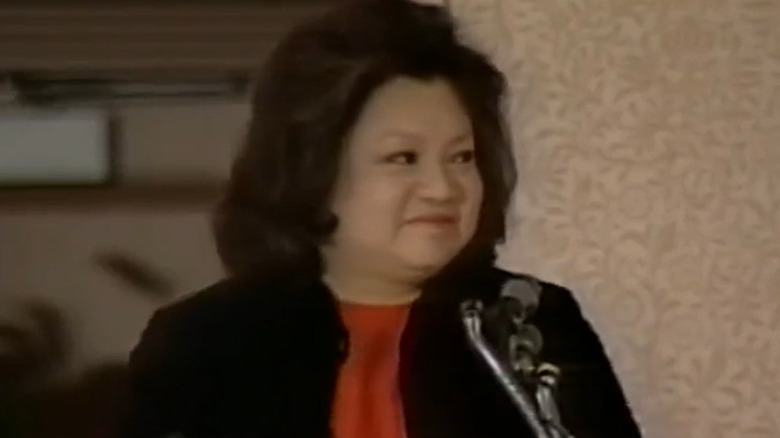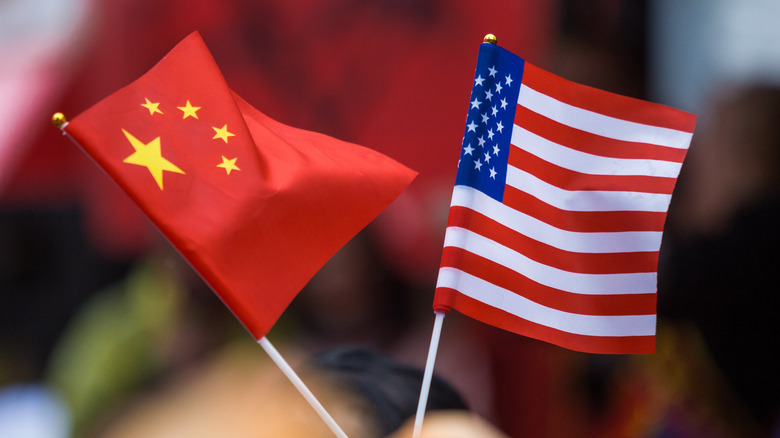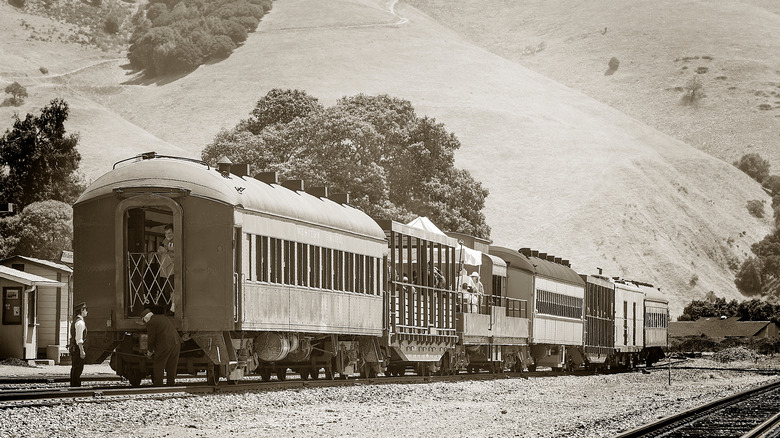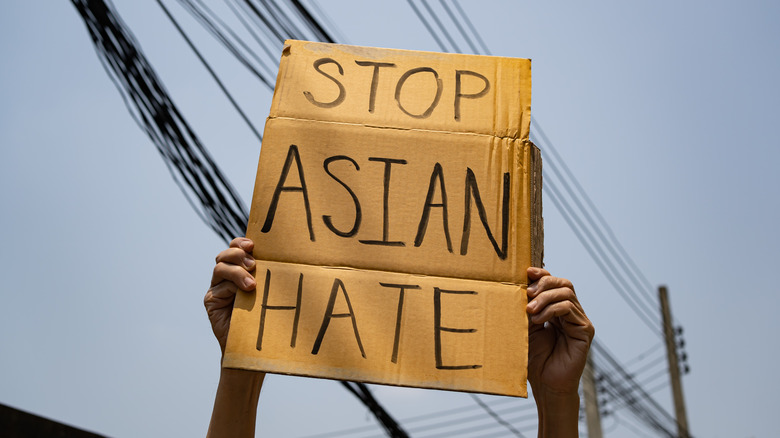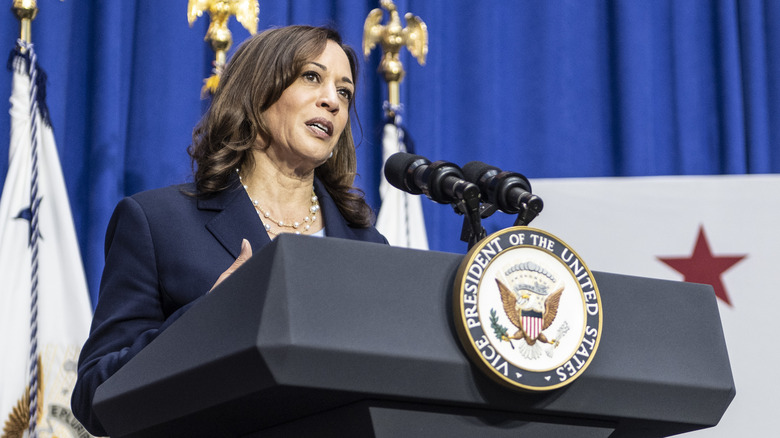The History Behind Asian American, Native Hawaiian, And Pacific Islander Heritage Month
May is a month chock-full of holidays. Mother's Day, Memorial Day, May Day, and some more obscure options — including Limerick Day and Sibling Appreciation Day — all line up one after the other in the calendar. But there's another celebration happening, too, and it lasts all month long. May is Asian American, Native Hawaiian, and Pacific Islander Heritage Month. It's a time when the country can come together and celebrate their history and how far they've come.
The influence of Asian Pacific Americans is everywhere nowadays. Meghan Markle's wedding look was created by an Asian American makeup artist, and celebrities like Mindy Kaling have spoken out about the importance of their Asian heritage. Even the music and comedy scene is influenced by these groups, with stars like Olivia Rodrigo and Bowen Yang speaking openly about their relationship with the AANHPI community. The influence of Asian Pacific cultures is only going to grow from here. According to National Today, the Asian community surpassed Hispanics to become the largest immigrant population in the United States back in 2012.
But what is it about the month of May that calls for celebrating that influence, and how did it get started? Like many other holidays and celebrations in the United States, it all comes down to the work of just a few dedicated people pushing for equity.
One family making a difference
There are more than 22 million people of Asian descent living in the United States now, and at least another 1.5 million people who identify as Native Hawaiian or Pacific Islander. The chance to celebrate their heritage and culture, though, started with one family of immigrants a handful of decades ago. The celebration was first proposed by Jeanie Jew, a second-generation Chinese American who worked on Capitol Hill in the 1970s (via NPR).
One day Jew brought up the idea of a week in honor of her culture to U.S. Rep. Frank Horton. Jew proposed the idea in part because of the discrimination and difficulties her own family had faced. According to NPR, her great grandfather, M.Y. Lee, was killed during a period where racism against Asian Americans was rampant.
It took about 15 years from when Jew first voiced the idea for it to be passed into law as an annual celebration, according to Time. The process wasn't without its difficulties, either. Time reports the first legislation was passed in 1978 — but the legislation wouldn't renew automatically, so the community had to push for the same celebration to happen again each year. It was expanded into a month-long celebration in 1990, but the recurring "annual" designation wasn't added until 1992 (via Time).
Why was the month of May chosen?
May has plenty of significance across a whole host of cultures, mostly relating to renewal and warmer weather. But for Asian Americans in particular, there's a direct reason to celebrate. The first Japanese immigrants arrived in the United States on May 7, 1843, according to NPR. And May 10 marks the completion of the first-ever transcontinental railroad, which was only possible due to the efforts of Asian Americans. The first AAPI heritage week in the 1970s encompassed these dates and was chosen to mark the anniversaries, according to NPR, and even the expanded month-long event is a nod to that early history.
At the time Jeanie Jew was pushing for a month honoring Asian Americans and Pacific Islanders, the country was coming to understand and highlight the importance of its minority populations. Hispanic Heritage Week became a national event in 1968, and Black History Month joined it in 1976 (via Time). Celebrating the influence and importance of different cultural groups was a growing movement in the United States at the time, and it made sense for Asian Americans, Native Hawaiians, and Pacific Islanders to join the chorus.
Building America on the backs of immigrants
The entire month of May is a celebration of Asian Pacific heritage, but there's one specific anniversary that deserves more focus. May 10 is known as Golden Spike Day, according to NPR, and marks the completion of the United States' first transcontinental railroad. When it comes to the history of westward expansion in the U.S., you might think of explorers like Lewis and Clark and their trek through the wilderness. But the development of railways was a huge part of the country's development, and the construction of those railways relied on an influx of Asian immigrants.
According to History, the Gold Rush brought huge amounts of Chinese immigrants to the country with hopes of a better life. At first, those immigrants were considered "too week" for railroad construction. But companies couldn't get enough white workers to actually make progress, so Chinese immigrants were brought back on (via Stanford). Railway companies actually required enough labor that they began recruiting workers directly from China, rather than looking just to immigrant populations. But those Chinese workers also faced discrimination and poor treatment during their time on the railroads. According to Stanford, they were on the hook to pay for their own food despite the low wages they were provided — unlike their white counterparts, who were provided with meals.
Making up for decades of discrimination
The decision to celebrate Asian American, Native Hawaiian and Pacific Islander heritage was a big shift for the United States. Both the citizens and the government of the country have a long history of anti-Asian sentiment, extending back centuries. It's something we're still dealing with today, particularly in light of the coronavirus pandemic — which led to a spike in hate crimes and harassment (via NPR). Long before COVID-19, though, the U.S. was enacting legislation that aimed to limit Asian American immigration and influence.
One of the first formal efforts to stifle the Asian American community was way back in the 1800s. Waves of Chinese immigrants started to enter the country in the 1840s during the Gold Rush, according to History. But the Chinese Exclusion Act, passed in 1882, completely banned Chinese immigrants from entering the country for an entire decade (via National Today). And, during World War II, the U.S. government created internment camps for Japanese Americans following the bombing of Pearl Harbor. Native Hawaiians and Pacific Islanders are still dealing with the effects of U.S. colonialism and settlement.
Throughout the country's history, Asian Americans, Pacific Islanders and Native Hawaiians have faced repeated acts of discrimination and distrust — much of which led to deaths like that of Jeanie Jew's grandfather. Declaring a month to honor heritage doesn't fix those issues, but it is one way to allow members to celebrate their own culture and recognize that history.
Focusing on the future
Even in the face of discrimination and inequity, Asian Americans, Native Hawaiians, and Pacific Islanders have found a place in the United States. Today, Kamala Harris is making history as the first woman — and the first person of Asian descent — to fill the role of Vice President. And countless celebrities and artists cite their Asian Pacific heritage as a source of pride and inspiration. The Federal Asian Pacific American Council is honoring that progress, citing leadership in its themes for heritage months over the past few years. This year, FAPAC is also highlighting the sense of community within the Asian Pacific cultures by emphasizing collaboration and advancement, per the organization's website.
But the influence of Asian Americans, Native Hawaiians, and Pacific Islanders isn't just something you see on a broad, national scale. There are a plethora of smaller businesses that can use the month as an opportunity to promote the work they're doing, in industries like restaurant and food service or even makeup. And if you're interested in learning more about the history of the Asian Pacific communities, chances are a celeb you love has already spoken up about the importance of their culture on the work they do, and how you can celebrate along with them.
